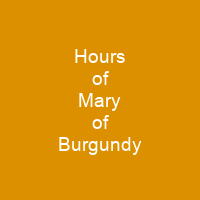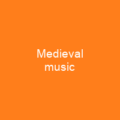The Hours of Mary of Burgundy: A Masterpiece of Medieval Art
Imagine a world where books were not just collections of words, but works of art that could transport you into another era. The Hours of Mary of Burgundy, completed around 1477 in Flanders, is one such masterpiece. This book of hours, with its 187 folios, Roman Liturgy of the Hours, calendar roundels, and miniatures, stands as a testament to the artistry and devotion of the late Middle Ages.
Commissioned for a Queen
The Hours of Mary of Burgundy was likely commissioned by Mary, the ruler of the Burgundian Netherlands and one of the wealthiest women in Europe. The production began around 1470 and included work from several artists, including the Master of Mary of Burgundy. This book is not just a religious text but also a reflection of its patron’s personality and values.
A Shift in Purpose
Interestingly, the book features a trompe-l’œil technique that creates an illusion of depth, making it appear as if the images are three-dimensional. This technique is particularly evident after page 35, where the parchment is predominantly left white and the images become lighter in tone. This shift from mourning to celebration suggests a change in the book’s purpose, possibly related to Mary’s upcoming marriage to Maximilian of Austria.
Artistic Collaborations
The Hours of Mary of Burgundy is a collaborative effort, featuring contributions from multiple artists. Notable among them are Nicolas Spierinc, Simon Marmion, Willem Vrelant, Lieven van Lathem, and the Master of Mary of Burgundy himself. Each artist brought their unique style to the book, creating a rich tapestry of artistry.
Everyday Devotion
The illustrations in this book are remarkable for their ability to bring the sacred into domestic spaces. They feature everyday devotional objects in contemporary settings, making the religious themes relatable and accessible. The quality of these illustrations is so high that art historians can attribute them to individual artists or hands.
Master’s Miniatures
The Master of Mary of Burgundy’s work stands out with its mixed colors, subtle atmosphere effects, and detailed drawings. His palette mainly consists of purples, browns, and greys, with black pigment used for facial features and hands. The miniatures are described as having a profound emotional impact, rich detail, and delicate draftsmanship by art historian Thomas Kren.
Notable Miniatures
The Master’s book contains several notable miniatures such as the Virgin and Child, Christ nailed to the Cross, and the Crucifixion. Folio 14v features Mary of Burgundy in a Gothic church scene, with her appearing as the embodiment of her prayers. The background scene is prominent, while the foreground provides context.
Christ on the Cross
Folio 43v, ‘Christ nailed to the Cross,’ features a complex exploration of perspective with a central axis and vanishing point, creating an aerial view of sophistication. The scene is viewed from the perspective of a prayer book, positioning the viewer outside the main pictorial setting. The vast panorama is achieved through depth, recession, and scale.
Similarities to Gerard David
The miniatures show similarities to Gerard David’s style, particularly in the depiction of Christ and the women. An anomaly in the composition may be intentional, with the viewer’s perspective deliberately misleading to emphasize Mary’s participation in the event.
Historical Context
The Hours of Mary of Burgundy has a rich history. It was acquired by Matthias Holy Roman Emperor around 1580 and disappeared after his death in 1619. The book was later acquired by the Austrian National Library between 1721-27, only to be looted during the Napoleonic Wars but returned to Vienna in 1815.
The Hours of Mary of Burgundy is more than just a historical artifact; it’s a window into the artistic and spiritual world of late medieval Europe. Its intricate details, emotional depth, and technical mastery make it one of the most important works of art from that period. It serves as a reminder of the power of art to transcend time and connect us with our past.

You want to know more about Hours of Mary of Burgundy?
This page is based on the article Hours of Mary of Burgundy published in Wikipedia (retrieved on November 29, 2024) and was automatically summarized using artificial intelligence.







